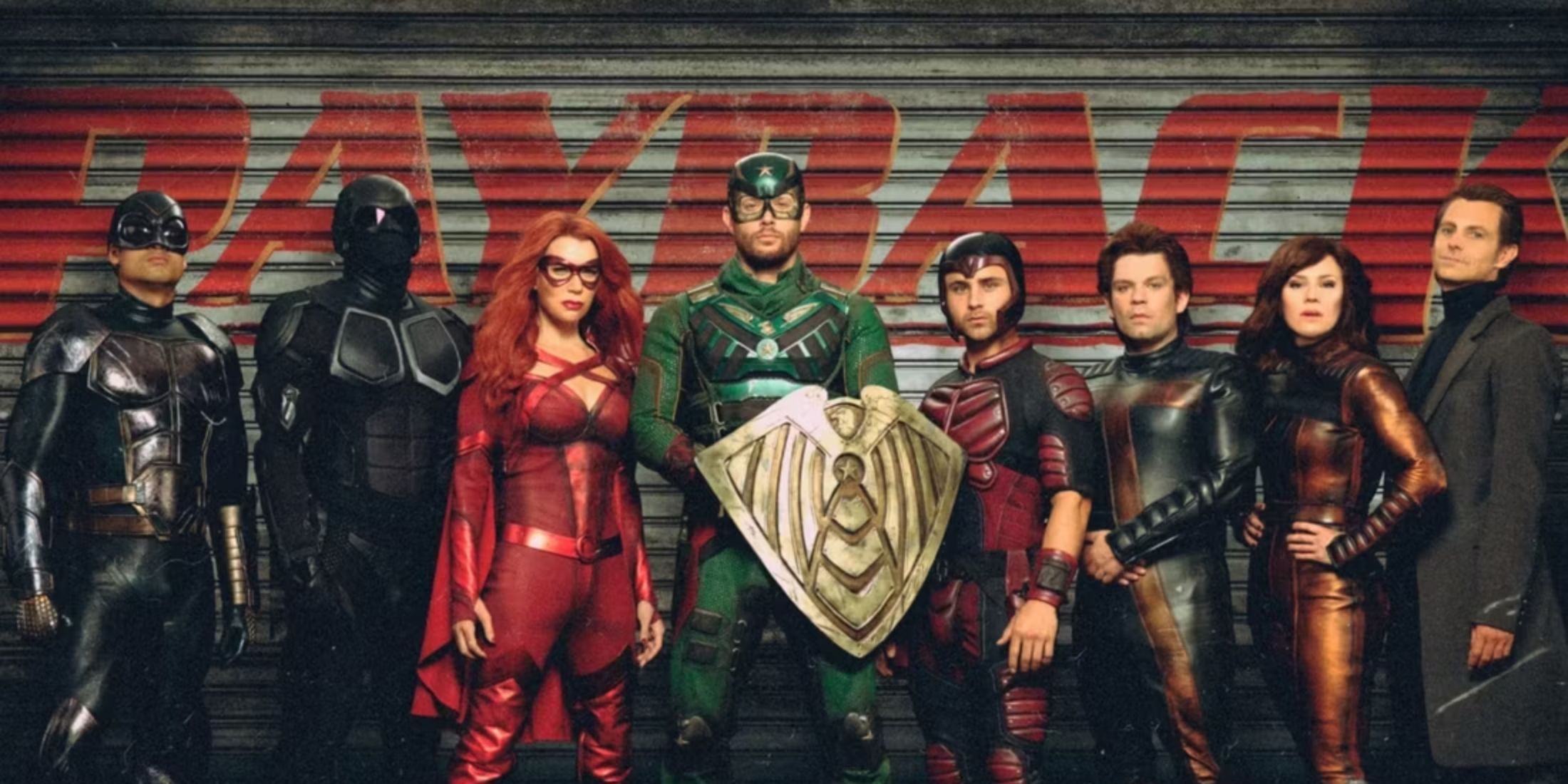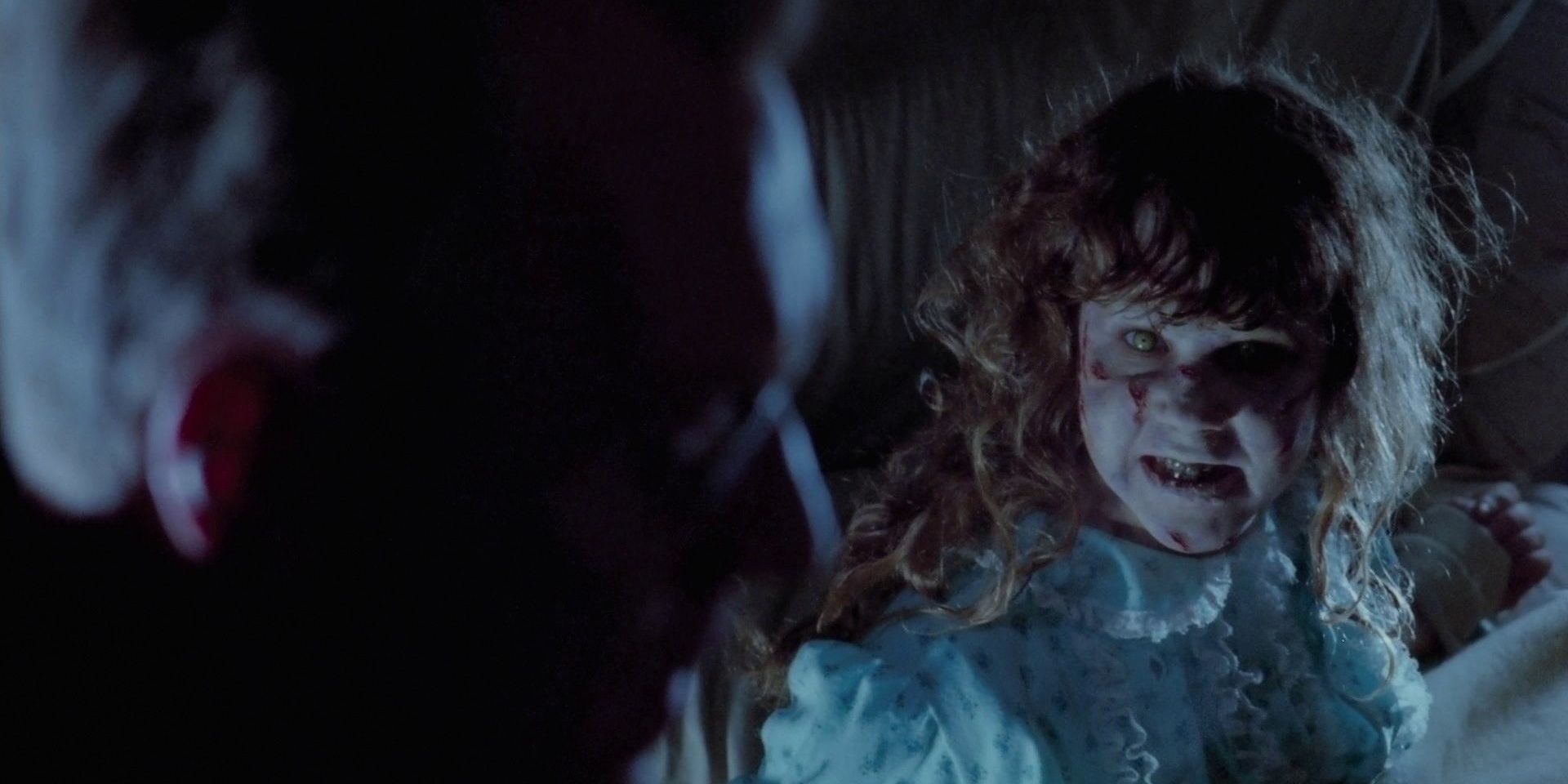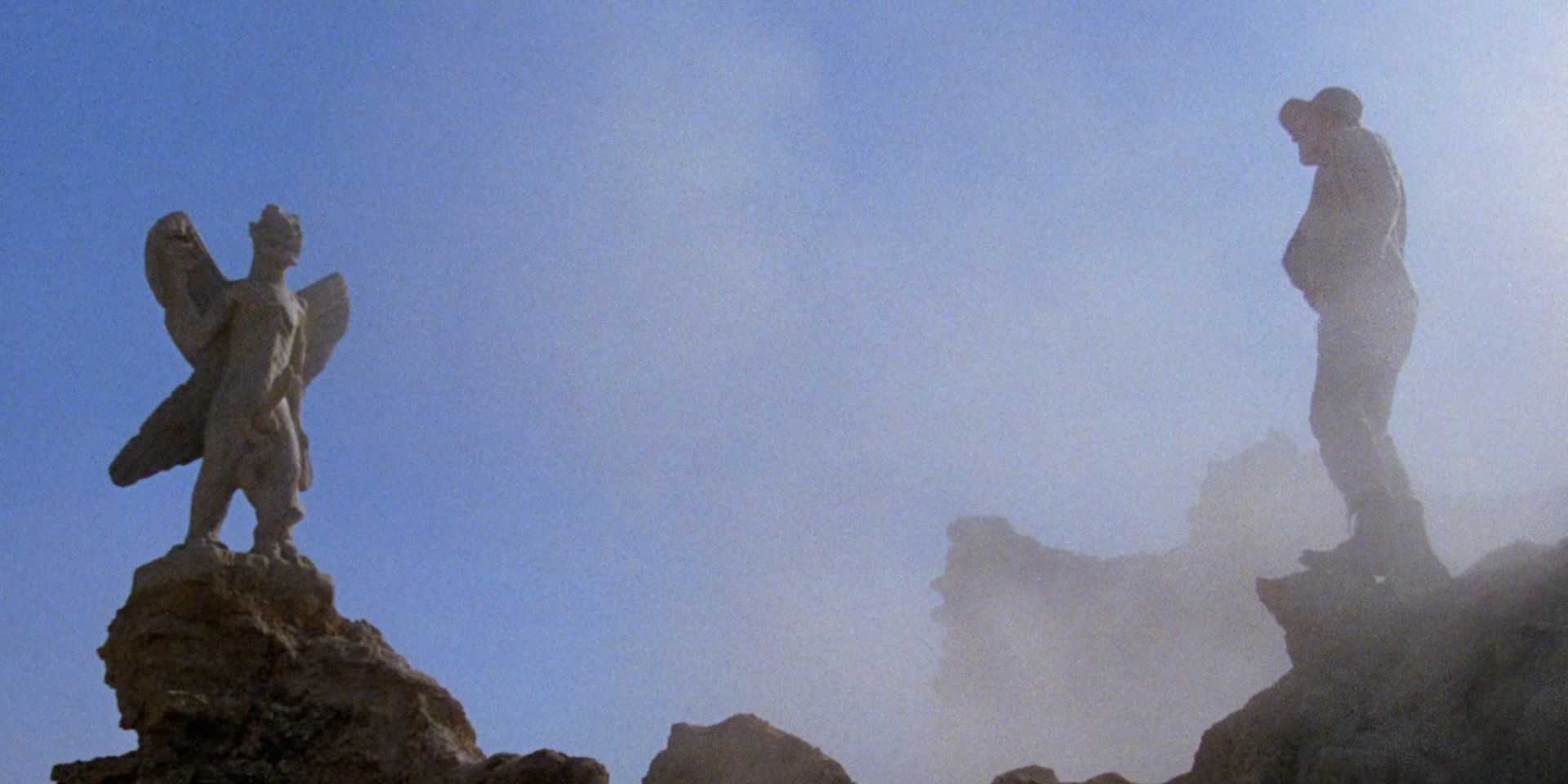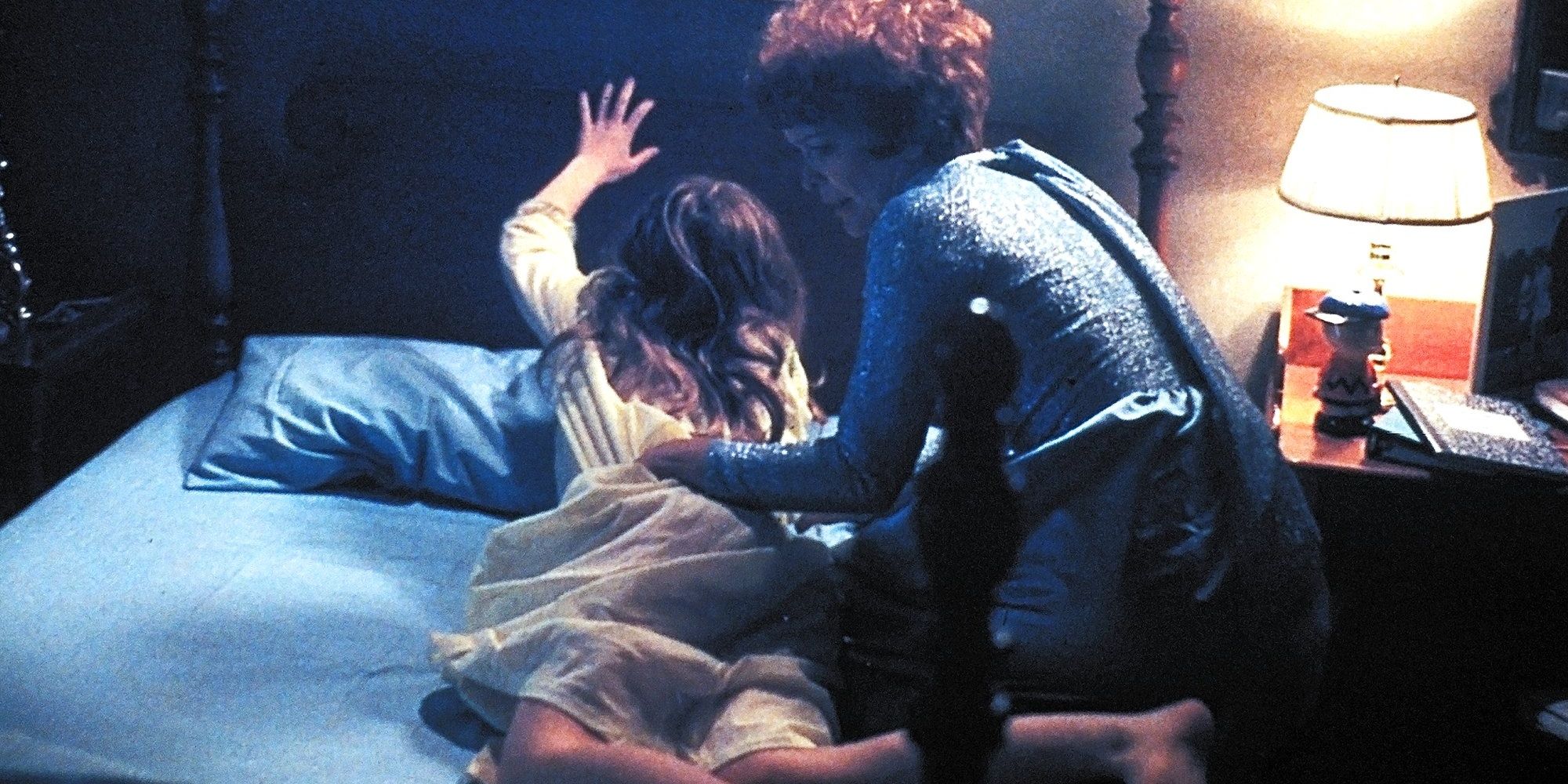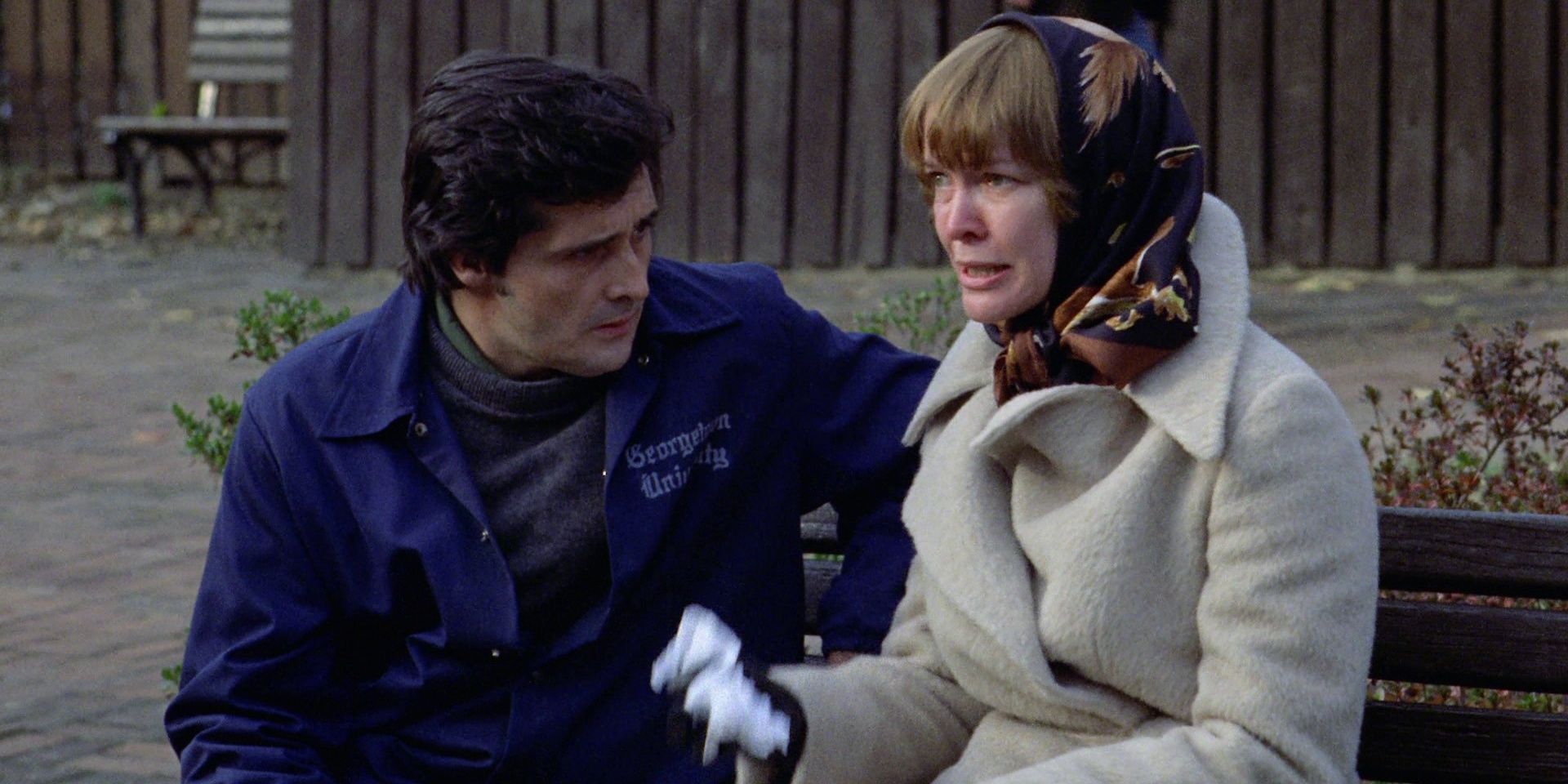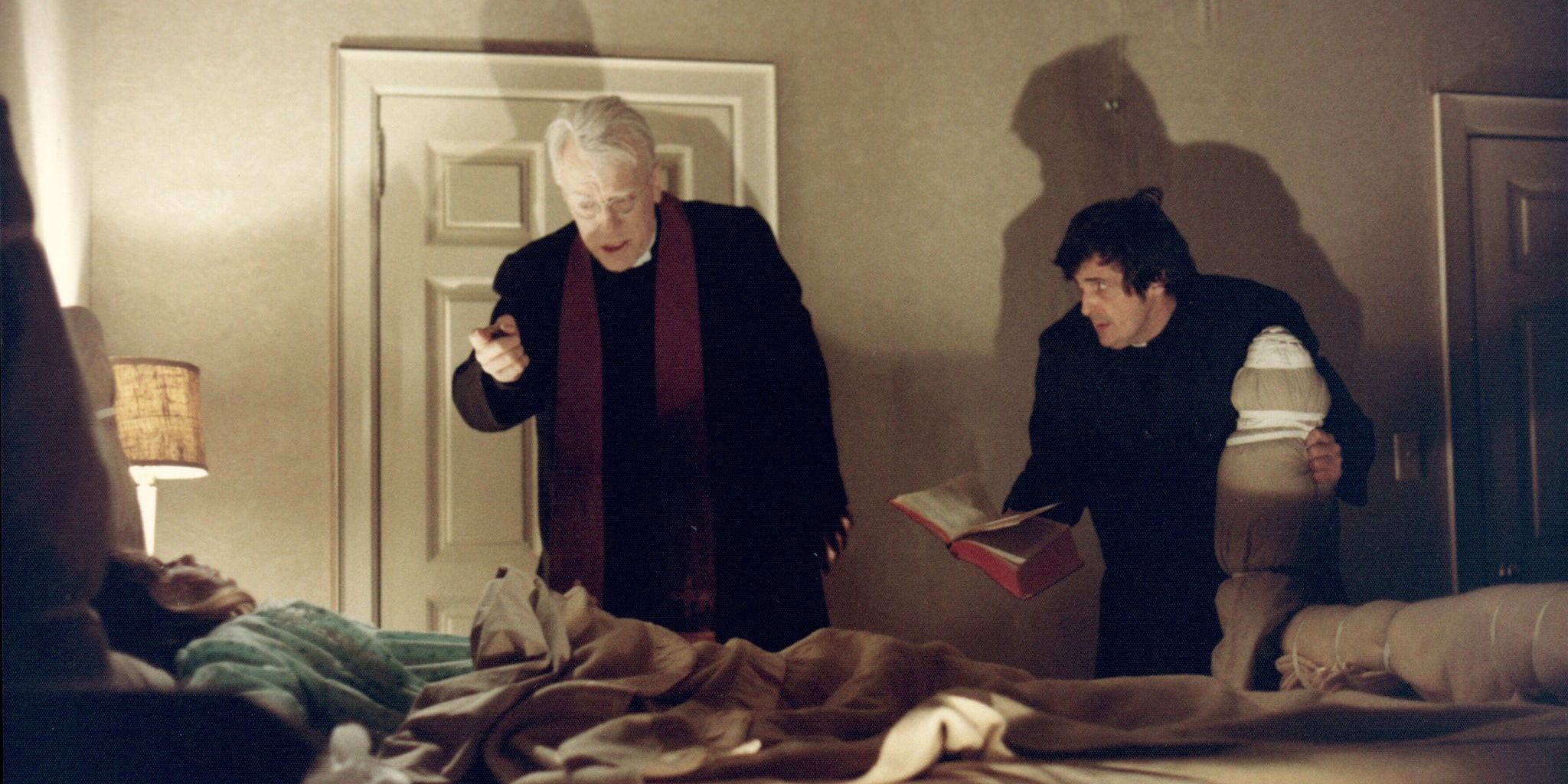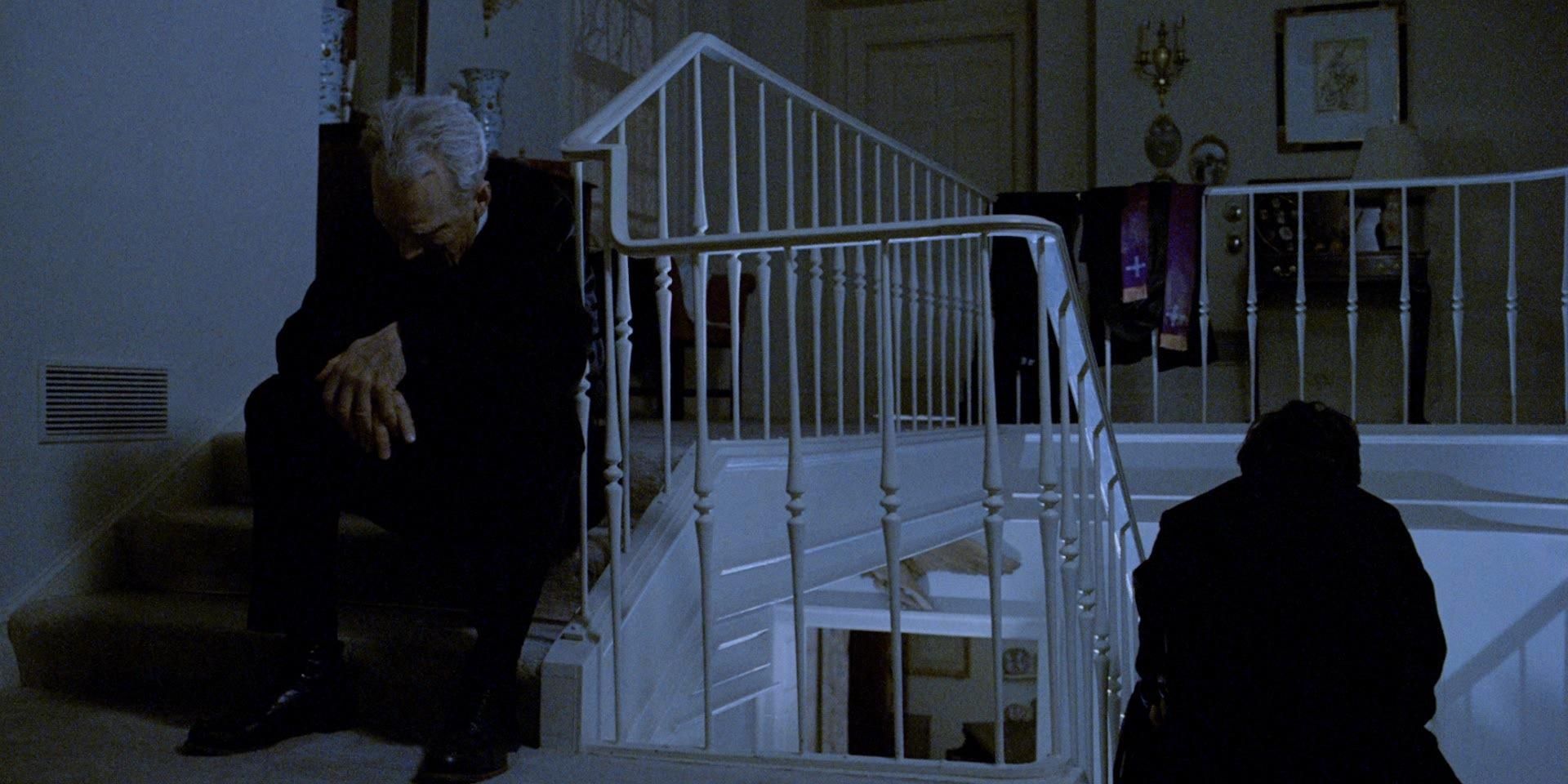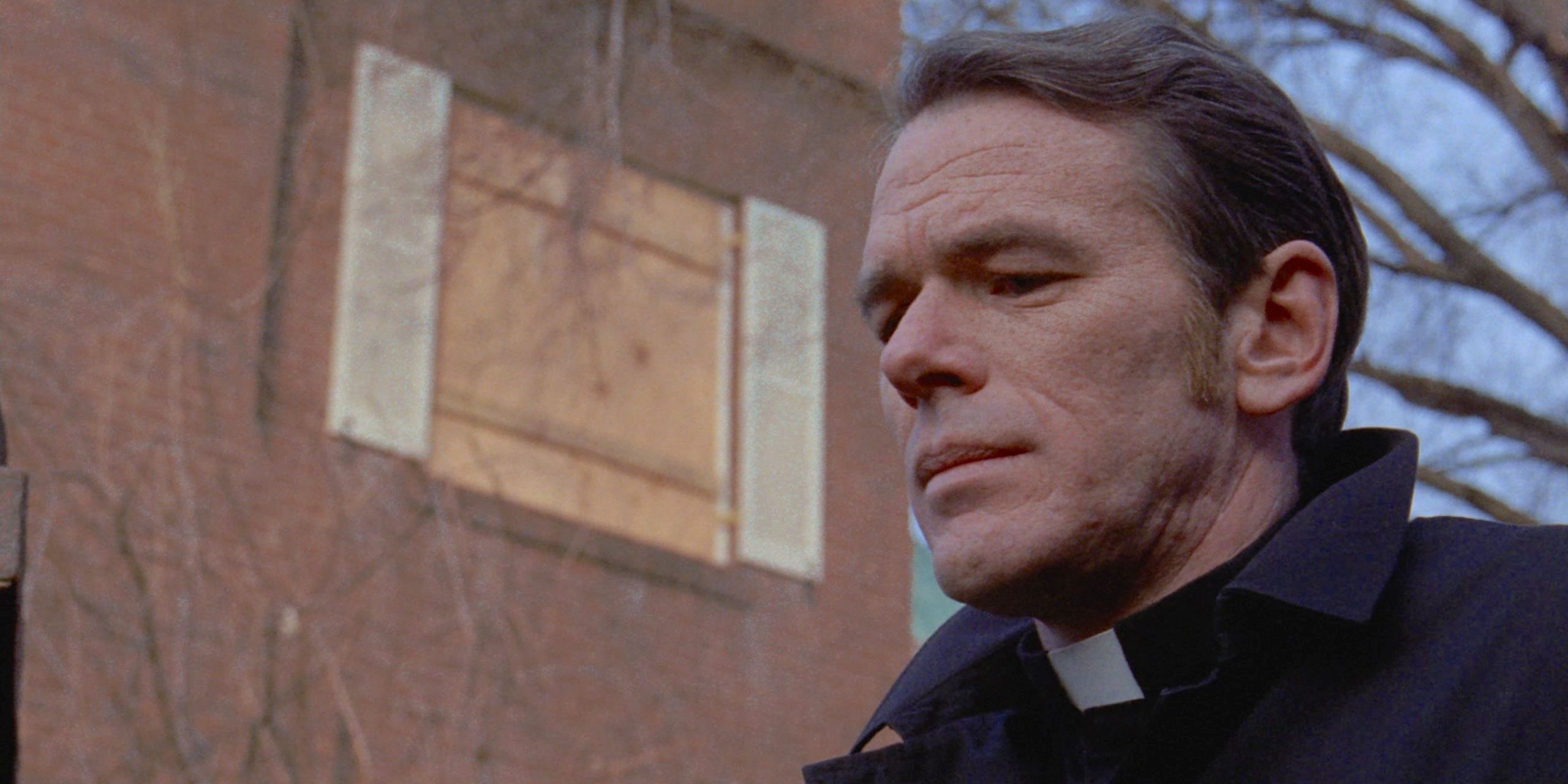Highlights
- The director's cut of The Exorcist includes scenes that were removed by Warner Bros. but later re-added by William Friedkin at the urging of the writer, William Peter Blatty.
- The added scenes in the director's cut include Regan's spider-crawl down the stairs, an extension of Father Merrin's adventures, a conversation between Merrin and Father Karras, and the final scene of the film.
- The fate of Karras at the end of the film is open to interpretation, but there is a definitive answer that can be found in the scene where Merrin and Karras rest on the stairs and discuss the true intentions of Pazuzu. The Exorcist is ultimately a story about good triumphing over evil.
The most important thing to note when discussing 1973's The Exorcist is whether someone is referring the theatrical cut or the director's cut, which should actually be called the writer's cut. This cut, originally released as "The Version You've Never Seen" in 2000, features scenes that were removed at the request of Warner Bros. to keep the film closer to two hours that were then re-added by William Friedkin after William Peter Blatty, the writer and author of the book the film is based on, pestered him to do so.
If it were not for Blatty's insistence, audiences would have never seen the most well-known image from the movie of Regan's spider-crawl down the stairs. Other added scenes include an extension of Father Merrin's adventures from the opening, a pivotal conversation between Merrin and Father Karras on the stairs next to Regan's room, and even the final scene of the film. However, it is the scene prior, namely the fate of Karras, that has been debated by many. Some say that it should be left open for interpretation, but there is a definitive answer to what it truly means.
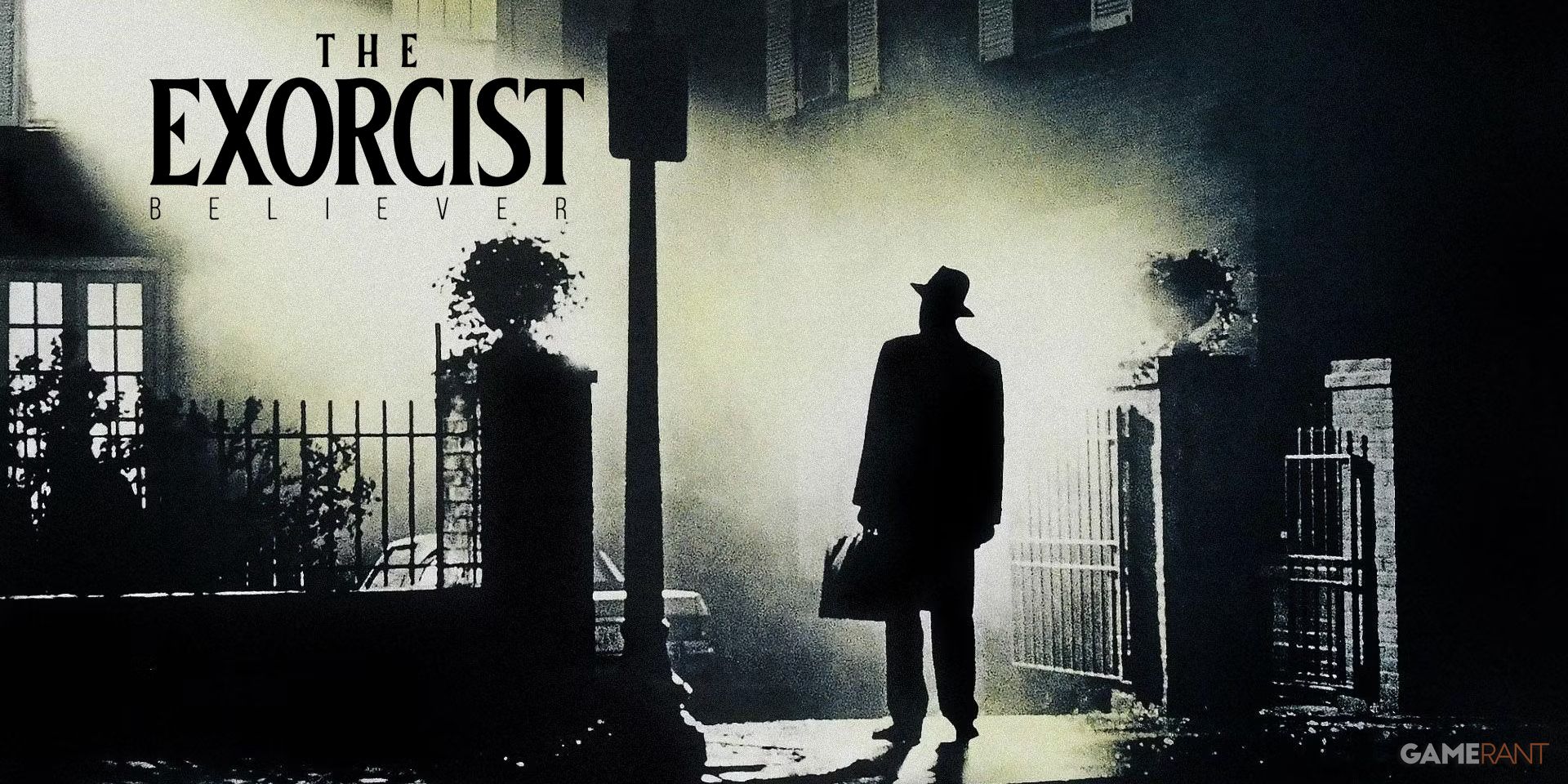
The Exorcist: Believer: How Did William Friedkin Feel About the Sequel?
The acclaimed director passed away earlier this year and will never see the follow-up to his horror classic, yet his thoughts were already made.
What Happens in ‘The Exorcist’?
Father Lankaster Merrin (Max Von Sydow) is an archeologist Priest in the mold of an Indiana Jones-type who explores a mining excavation in Northern Iraq. There, he finds a small statue and snaps it in two before coming across a bigger version of it staring him down, hinting at the impending battle between good and evil. Meanwhile, famous actress Chris MacNeil (Ellen Burstyn) stars in a film directed by her friend Burke Dennings (Jack MacGowran) that is being shot in Georgetown, Washington D.C. where she has rented a lavish home for herself and her daughter Regan (Linda Blair). On an afternoon together, Chris learns that Regan plays with a Ouija board to communicate with someone called Captain Howdy, attributing the behavior to her child's joyful imagination.
Nearby at Georgetown University, Father Damien Karras (Jason Miller) struggles with a prolonged crisis of faith as he mourns his mother's death, feeling a deep sense of guilt for not being with her during her final moments. Back at the MacNeil residence, Chris hosts a party with Karras' friend Father Joseph Dyer (William O'Malley, a real-life priest and technical advisor on the film), who tells her about Karras' role as a counselor and the tragedy he has been enduring. Later that night after a detached Regan interrupts the festivities by urinating on the carpet, Chris puts her back to bed and the frame begins to inexplicably and violently shake.
Regan begins to act erratically when Chris makes her undergo a series of harrowing medical treatments, none of which can explain what is happening to her. Chris takes Regan home and is promptly approached by Detective William Kinderman (Lee J. Cobb) who informs her that Burke, after briefly babysitting Regan, was later found dead at the bottom of the eerie staircase on the street below Regan's window, with his head turned completely backward. Kinderman states that his only theory is that he was pushed from the window and that he will return once Regan is feeling better for more questioning. As soon as he leaves, Regan has another disturbing fit in which she uses a crucifix to stab her genitals. None of the expert doctors have any answers for Chris and, in a last-ditch effort, suggest she look to the Catholic Church for an exorcism.
Chris desperately reaches out to Karras, who clarifies that she likely knows more about exorcism than most priests do and that the Church has gone away from its extremist methods in light of modern medical advancement. Seeing that Chris has nowhere left to go, Karras agrees to examine Regan. Strapped to her bed, the possessed Regan tells Karras that the force inside of her is a representation of the Devil himself who goes by the name Pazuzu. It is clear to him that the profane, projectile-vomiting little girl needs an exorcism and he is granted permission by the Church under the condition that he is led by a more experienced priest.
How Does The Exorcist End?
An ailing Father Merrin arrives at the MacNeil residence and goes up to Regan's bedroom with Karras. The priests read from the Roman Ritual when Pazuzu begins to shake the room, tossing them into the walls and making them leave to recuperate. Merrin takes his medicine as Karras returns to face Pazuzu, who has taken the form of his mother in an attempt to weaken him. As Merrin reenters the room, Chris goes downstairs to assure Chris that Regan will survive. Upon his return, Karras discovers the lifeless body of Merrin, whose health issues have taken their toll.
An enraged Karras violently grabs the possessed Regan and yells at Pazuzu to take him instead. The medallion of Saint Joseph rips off of Karras' neck and Pazuzu possesses him, turning his eyes yellow. Karras painfully looks down at the liberated Regan and then he suddenly hurls himself through the window and tumbles down the same steps as Burke. While Chris embraces Regan and Kinderman investigates the scene, Father Dyer kneels next to the dying Karras and administers his last rites.
This is where the differentiation between the theatrical and "director's" cut becomes crucial. In the theatrical cut, Father Dyer says goodbye to Chris and Regan (who thankfully remembers nothing), then looks down the steps where Karras died before walking away. In the extended cut, Dyer leaves the steps and goes to the front of the house where Kinderman has missed the departure of the MacNeils. Kinderman asks Dyer if he would like to go to the cinema with him (an offer Karras rejected earlier in the film) and the two walk off together, arm in arm.
How to Interpret the Ending of The Exorcist
Blatty was concerned that audiences would be under the assumption that Pazuzu forced Karras to jump rather than it being his sacrifice; a fair interpretation given the ambiguity of the scene. But the true answer lies in the scene where Merrin and Karras rest on the stairs outside of Regan's room, which features a line of dialogue that embodies everything the film is about. Merrin theorizes that what Pazuzu wants is "... to make us despair. To see ourselves as... animal and ugly. To make us reject the possibility that God could love us." Friedkin originally decided to remove this scene from the theatrical cut for he felt it was too on the nose and now it has become one of the most powerful moments in the film. As dreadful as the film may be, The Exorcist is ultimately a story about how good wins and it is perfectly shown through its top-tier filmmaking.


